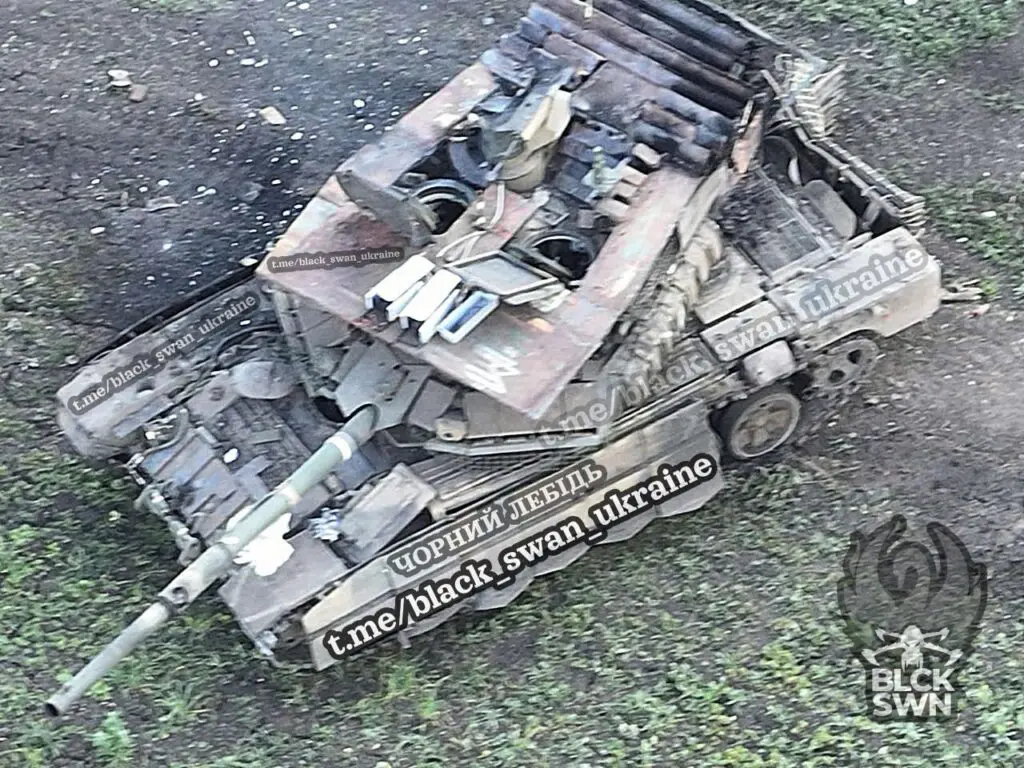Considered the main threat on the Ukrainian battlefields, FPV drones are forcing the ground forces of Russia and Ukraine to constantly introduce improvements and modifications to protect their main tanks. This is evident in a series of images and videos where M1A1 SA Abrams and T-90M “Proryv-3” tanks show how both sides continue to improvise additional armor and new countermeasures to minimize the effects of drone attacks.

As we reported a few days ago, the Ukrainian Army is modifying its M1A1 SA Abrams tanks with additional reactive armor and protection to counter drone attacks. At least one of the American-made tanks has received modifications to its turret, with grills installed on its top and sides to increase the protection of some of the most vulnerable areas, such as the ammunition compartment and targeting systems. Grills have also been installed on the rear of the hull, covering the engine compartment.
Although initial reports indicated that the Ukrainian Army had temporarily withdrawn its M1A1 SA Abrams from the frontlines, actions in recent weeks have shown otherwise. This situation likely responded to the need for cavalry units to halt various advances by ground forces, leading to additional losses.
Open-source reports indicate that Ukraine has lost at least eight M1A1 SA Abrams in combat, almost a quarter of the total provided by the U.S. At least one tank was captured by Russian forces and was displayed in Moscow a few weeks ago alongside various Western-origin equipment.

A similar situation is being experienced by the T-90M “Proryv-3”, the most modern tank model of the Russian ground forces operating in Ukraine. Various sources indicate that Russia has suffered the loss of more than 90 T-90Ms, including destroyed, damaged, and captured vehicles.
Like the Ukrainian case, Russian tanks have received various modifications to adapt to present and emerging threats on the Ukrainian battlefields. This has included anti-tank missiles, attack drones, and FPV drones.
Despite various passive initiatives, including all kinds of additional armor and electronic countermeasures, the T-90M “Proryv-3” retains some of the weaknesses that affect almost all current Russian tanks inherited from the Soviet era. Hundreds of videos have shown that hits on certain critical points of Russian tanks can cause catastrophic explosions, resulting in the loss of crews. This vulnerability is a central issue when compared to Western equipment, which has validated its design aimed at protecting personnel.
The latest improvements recorded on the T-90M “Proryv-3” tanks include a new layer of armor on the top of the turret, additional reactive armor over the ammunition compartment, grills on the rear of the hull, drone jammers, and additional cameras for the crew.
The emergence and massive use of simple attack drones and FPV drones still constitute one of the main challenges for both sides, a situation for which effective solutions have yet to be implemented. The particular vulnerability of armored vehicles is leading to a rethink of designs, with the implementation of various initiatives to ensure crew survival and minimize vulnerable points.
You may also like: Due to its employment against Ukraine, North Korea could improve their short-range ballistic missiles














